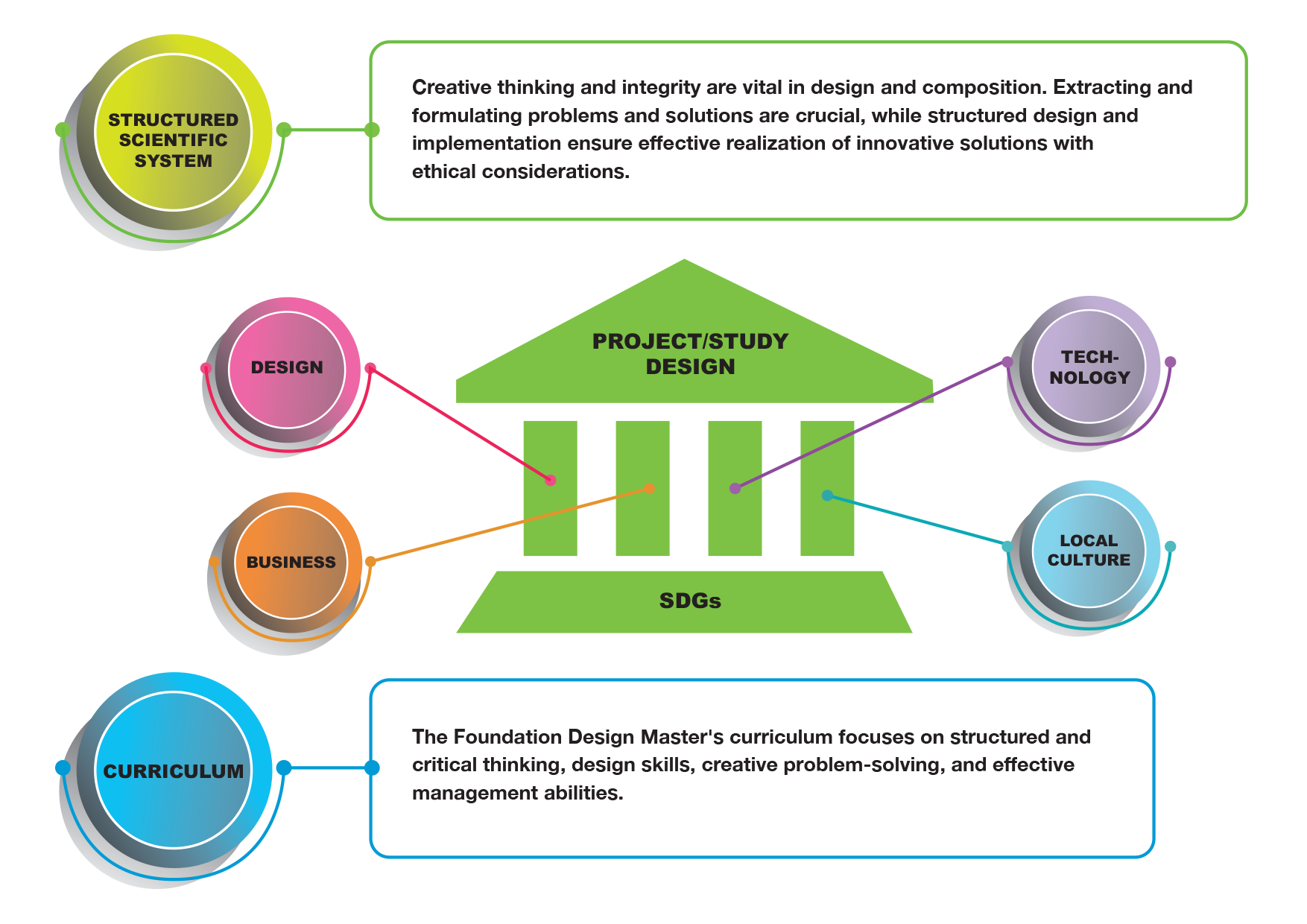Research Thesis Topics

ACADEMIC YEAR 2024/2025 Odd (Sept, Nov 2024)
- Business Innovation for Sustainability: Analyzing successful business models that prioritize environmental and social sustainability, investigating how design can be a driving force in shaping these models, and proposing new strategies for businesses to align with sustainable practices.
- Cultural Integration in Design: Investigating the role of local culture in design processes, exploring methods to integrate cultural sensitivity into product and service design, and assessing the impact of culturally informed designs on user experience and market acceptance.
- Technological Integration for Sustainable Solutions: Examining the latest technological advancements and their potential application in sustainable design, addressing challenges, and proposing frameworks for integrating technology responsibly to enhance sustainability efforts.
- Cross-disciplinary Collaboration: Evaluating the effectiveness of cross-disciplinary collaboration in design projects, identifying key challenges, and proposing methodologies to foster collaboration between designers, business professionals, technologists, and cultural experts for comprehensive and impactful outcomes.
- User-Centric Design for Sustainability: Emphasizing the importance of user-centric design in sustainable solutions, investigating user behaviors, preferences, and cultural nuances to create products and services that resonate with diverse communities and contribute to long-term sustainability.
ACADEMIC YEAR 2024/2025 EVEN (Mar 2025)
- Digital Design: It refers to the process of creating designs using computers, integrating various interdisciplinary knowledge mastered by students, with outcomes in the form of creative works or research. This includes fields such as graphic design, immersive design, CGI, and Animation. Digital design is applied in various areas, ranging from branding and marketing to interactive media and product development.
- Cultural Design: refers to the practice of creating designs that are deeply rooted in cultural values, traditions, and heritage. It integrates elements of history, symbolism, and local identity to develop visual, spatial, or product-based solutions that resonate with specific cultural contexts. Cultural design can be applied in architecture, graphic design, product design, fashion, and digital media, ensuring that creative works reflect and preserve cultural narratives while adapting to contemporary needs.
- Emotional Design: refers to the approach in design that focuses on creating products, experiences, or interfaces that evoke specific emotional responses in users. Coined by Don Norman, emotional design emphasizes how aesthetics, functionality, and usability influence user feelings at three levels: visceral (immediate sensory appeal), behavioral (usability and performance), and reflective (personal meaning and connection). Emotional design is widely applied in product design, user experience (UX) design, branding, and interactive media to enhance engagement and user satisfaction.
- Communication Design: is the practice of strategically crafting visual and textual content to effectively convey messages, ideas, or information to a target audience. It integrates elements of graphic design, typography, branding, digital media, advertising, and user experience design to create meaningful and engaging communication across various platforms. Communication design plays a crucial role in marketing, education, public awareness, and interactive media, ensuring clarity, impact, and aesthetic appeal in delivering information.
- Sustainability Design: is an approach to design that prioritizes environmental, social, and economic responsibility to create solutions that minimize negative impacts and promote long-term sustainability. It integrates principles such as resource efficiency, eco-friendly materials, circular economy, and social equity across various fields, including architecture, product design, urban planning, and fashion. Sustainability design aims to balance functionality, aesthetics, and ethical considerations while addressing global challenges like climate change, waste reduction, and sustainable development.

